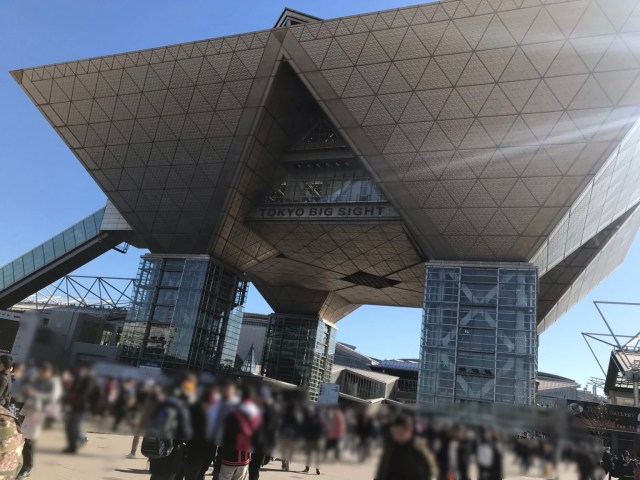Biannual running of the otaku fails to take place for second time in a row

Some fear the tradition may never return, but most just hope so.
Shortly after sunrise on 13 August, a lone man dressed in yellow stood outside of the entrance to Kokusai-Tenjijo Station. Though nervous about what was to come, he stood strong and with confidence that he could handle the job assigned to him.
That job was to corral hundreds of stampeding otaku, hungry for independently produced content, in what has become known as Comiket Dash. This biannual mass migration of otaku is a beautiful natural phenomenon in which otaku flood as fast as they can from the first train of the day to the entrance of the Tokyo Big Sight convention center, which Kokusai-Tenjijo Station is the closest stop to.
However, this time the flood was a mere trickle…
りんかい線の始発が国際展示場駅に到着。
— おんさ@8/14フクダ電子アリーナ
チケット制になったため、かつてのようなダッシュはありません。
#C100 pic.twitter.com/vNaPVoPZrD𝓟𝓟𝓔
(@onsa2235) August 12, 2022
This is the second time that the Comiket Dash has failed to materialize. Instead of running through ticket gates with reckless abandon, the otaku appeared far more placid and orderly. For comparison here’s footage of a Comiket Dash from 2018.
When this scene didn’t unfold last winter, many pointed at the pandemic as the cause. The independent comic, cosplay, and video game convention was canceled three times due to COVID-19 and even last December it was on shaky ground, being held with attendance limits and fears that the plug could be pulled if things got out of hand.
However, this summer, despite the record number of infection cases, event restrictions in Japan are becoming increasingly relaxed, so a good old-fashioned Comiket Dash probably wouldn’t have been an issue anymore. Some suggested another possible cause was that a typhoon was on a collision course with the area on the day of the event which might have encouraged to keep everyone on their best behavior.
▼ Many attendees were battered with rain and wind while waiting patiently to enter the venue
But the most likely reason that the Dash was dashed has to do with changes to the admission system. The number of attendees was limited to between 80,000 and 90,000 this time, but more importantly tickets were sold in advance. When purchasing a ticket, attendees are given a scheduled check-in time window to intentionally spread out the number of people entering at one time.
▼ It’s an event planning technique known as “the Moe Howard.”
Since numbers are limited and entry is staggered, the incentive to run like mad has been greatly diminished and people are once again free to stop and ask for directions without fear of being trampled, as seen in this video.
穏やかな始発ダッシュとなりました #C100 pic.twitter.com/b5Rt5rtUea
— うわず (@uwaz_uzuz) August 12, 2022
Comments regarding this development seem happy with the change of pace and hope it becomes the norm.
“I think they didn’t want to do a ticket system like this before because they didn’t think of themselves as a major commercial event, but I think we can see it’s a good idea.”
“Wow, add the Dash to things erased by COVID-19.”
“I looks like any other day except no one’s wearing a suit.”
“The organizers probably lost a lot of money from the pandemic, so this is also a good way to keep security costs down.”
“I don’t know why they didn’t do this sooner.”
“But I think that was the only time a lot of these guys exercised.”
“I still think it’ll take just one person to start running and then start a chain reaction.”
There does seem to be a tipping point that would trigger a Dash relapse if numbers continue to get big enough. However, as one comment alluded to, Comiket should probably stop pretending like it’s still some intimate indie gathering and start acting like the major event it has become. Curbing the mad dash that ensues every time would be a good first step, preferably followed by stopping sweat clouds from forming.
Source: Hachima Kiko, Facebook/ComicMarket
Top image: © SoraNews24
● Want to hear about SoraNews24’s latest articles as soon as they’re published? Follow us on Facebook and Twitter!
Credit:




0 comments: